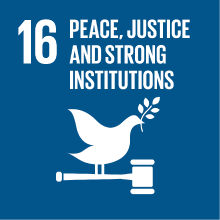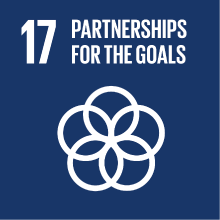INTERNATIONAL MARKETING AND NEW PRODUCT DEVELOPMENT - MOD.1
- Academic year
- 2024/2025 Syllabus of previous years
- Official course title
- MARKETING INTERNAZIONALE E NEW PRODUCT DEVELOPMENT - MOD.1
- Course code
- EM7022 (AF:463729 AR:256673)
- Teaching language
- Italian
- Modality
- On campus classes
- ECTS credits
- 6 out of 12 of INTERNATIONAL MARKETING AND NEW PRODUCT DEVELOPMENT
- Degree level
- Master's Degree Programme (DM270)
- Academic Discipline
- SECS-P/08
- Period
- 1st Term
- Course year
- 2
- Where
- VENEZIA
- Moodle
- Go to Moodle page
Contribution of the course to the overall degree programme goals
With the arrival of the new technologies of planning and communication, each enterprise can call itself, at least potentially, international.
This course aims to provide the attendants with the tools to face the evaluation of the international markets, the definition and the carrying out of marketing strategies and politics, and the management of commercial transactions with foreign countries.
In particular, the program does not intend to limit itself to describing the cultural peculiarities of the developing markets, but to deepen the main managerial problems and to show how to manage the marketing tools to make effective the relationships between companies and foreign markets. Particular attention, during the course, will be attributed to the way of building a marketing plan for the export. A thorough analysis will be reserved to some countries particularly relevant for Italian export.
Expected learning outcomes
Identify the cultural factors that influence the marketing activities in an international context.
Investigate, analyze and assess the environment of marketing, which determines exports and imports.
Identify and evaluate marketing strategies and activities of operators engaged in international markets.
Devise and justify a marketing plan for an italian SME engaged in export activities.
Pre-requirements
It is strongly recommended to have already attended the courses in the first year of "Marketing & Communication" program.
Contents
2. How to build a marketing plan for a foreign market
3. Why and how do Small and Medium-sized Enterprises face the foreign markets
4. How to analyze the attraction of a foreign market
5. The analysis of the “country of origin effect”: problems and opportunities
6. How to export directly and indirectly to a foreign market
7. Why and how to select a partner for an agreement of international partnership
8. Standardization versus adaptation of the value proposition: glocal and intertribal approaches
9. The entrance into the distribution channels and the connections with the local distribution
10. Pricing: changes, antidumping, transfer prices, price escalation
11. Promotion and intercultural negotiation
Referral texts
for the international marketing plan see M. McDonald, Piani di marketing, Milano, Franco Angeli Editore, 2010; E. Valdani, G. Bertoli, Marketing internazionale, terza edizione, Milano, Egea, 2023, ISBN: 978-88-238-2335-8.
Non attendants can take advantage from the following text:
Valdani E., Bertoli G., Marketing internazionale, 3rd edition, Milano, Egea, 2023, ISBN: 978-88-238-2335-8, chapters n. 3, 4, 5, 6, 7, 9, 10, 11.
Suggested readings:
Alon I., Jaffe E., Luceri B., Prange C., Vianelli D., Marketing internazionale. Strategie, Principi e Applicazioni, Torino, Giappichelli Editore 2022.
Battersby G.J., Simon D., Il manuale del licensing per licensor e licensee, Milano, Franco Angeli 2013.
Bursi T., Grappi S., Martinelli E., Effetto “country of origin”. Un’analisi comparata a livello internazionale sul comportamento d’acquisto della clientela, Bologna, Il Mulino 2012.
Cateora P., Gilly M., Graham J., Money R.B., International marketing, New York, McGraw-Hill 2016.
Child J., Faulkner D., Tallman S.B., Cooperative strategy, Oxford, Oxford University Press 2005.
Ghemawat P., Distance still matters, Harvard Business Review, settembre 2001, pp. 137-147.
Giannasi M., Casarin F., Philosophy of Marketing. The new realist approach, Abingdon, Routledge 2022 (available also in the library).
Hofstede G., Hofstede G.J., Minkov M., Cultures and organisations: software for the mind, 3a ed., McGraw-Hill 2010.
Santos C.R., Ganassali S., Casarin F., Laaksonen P., Kaufmann H.R. (eds), Consumption Culture in Europe, Hershey PA-USA, IGI Global, 2013.
Vianelli D., De Luca P., Pegan G., Modalità d’entrata e scelte distributive del Made in Italy in Cina, Milano, Franco Angeli 2012.
Assessment methods
Students who will attend lectures will be involved in individual project works (international marketing plan product/market). Further information will be published in the teaching moodle.
Evaluation criteria: correctness of the contents, internal consistency, completeness of the presented international marketing plan.
The student who does not attend the lessons can contact the teacher during office hours to receive a product/market combination on which to create an international marketing plan. Further indications are present in the moodle of the program.
Evaluation criteria: correctness of contents, internal coherence, completeness of the international marketing plan presented.
The probability of passing the exam and obtaining the maximum grade will be the same for attending and non-attending students.
Type of exam
Teaching methods
Lectures, project works, case history
Further information
Ca ’Foscari applies Italian law (Law 17/1999; Law 170/2010) for the support and accommodation services available to students with disabilities or specific learning disabilities. If you have a motor, visual, hearing or other disability (Law 17/1999) or a specific learning disorder (Law 170/2010) and you require support (classroom assistance, technological aids for carrying out exams or exams individualized, accessible format material, note retrieval, specialist tutoring to support the study, interpreters or other) contact the Disability and DSA office disita@unive.it.
2030 Agenda for Sustainable Development Goals
This subject deals with topics related to the macro-area "International cooperation" and contributes to the achievement of one or more goals of U. N. Agenda for Sustainable Development


